The History Of Four-Cylinder Motorcycle Engines In America
Before Henry Ford’s assembly line production of “affordable” cars displaced them, motorcycles were the prime means of motorized personal transportation.
Hundreds of home-grown variations appeared from garages all across the U.S. and Europe, each machine a handcrafted work of techno-art. Of all the various engine designs, motorcycles with an inline four-cylinder aspired to rival the newfangled automobile and provide a new level of comfort, performance, and even elegance. Some Brits said back in the day, “No nation embraced the cause of the inline four-cylinder motor cycle more than the U.S.”
In addition to early inline-Fours built in Europe, like the FN and Nimbus, the list of made-in-America machines includes Ace, Cleveland, Gerhart, Henderson, Indian, Militaire and Pierce. Here follows a brief history of the luminaries amongst the “Fours,” that more than 100 years later, still hold the status as the “crème de la crème.” We’ll spotlight, in chronological and transitional order, the FN, Pierce, Henderson, Ace and Indian manifestations.
A special thank you goes out to Preston Evans for making available his 1920 Ace and 1925 Henderson seen in photos below. Thanks also goes to Dale Walksler for his 1914 Henderson and 1923 Ace, and to Chuck Vogel for his 1924 Henderson. Joining them are other examples of iconic four-cylinder machines and some of the illustrious history that went with them.
The First “Four” Letter Word was by Belgium’s FN
Today, the Belgian firm of FN aka La Fabrique Nationale d’Armes de Guerre is better known for its state-of-the-art assault rifles than its motorcycles. Like BSA (Birmingham Small Arms), FN started off in the big business of the late 19th century’s military-industrial complex. In 1901, FN began producing bicycles powered by internal combustion motors, the advanced design graduating to a single cylinder “motorcycle” in 1902. Sales were healthy and improvements were made thanks to the talents of FN’s chief designer Paul Kelecom, who debuted in 1904 the new, 363cc air-cooled inline four-cylinder shaft drive marvel. He got things buzzing before sales started in 1905, when FN sent one of their new bikes to tour Europe, making a grand finale run to Paris.
Engine size was increased, and in 1908 there was a new cradle frame, new sprung forks, and a better tranny with a clutch, providing easier gear changes. Topping things off for ’08, an FN placed third at the prestigious Isle of Man TT, averaging a then-blistering 36 mph around the course. Better yet, since bikes were allotted a specific amount of fuel, it turned out the FN Four was making 90 mpg – best in its class. In that same year an FN Four won a gold medal at the annual London-Edinburg-London run. At this point, the Belgian army contracted for a number of FN Fours, indicating trust in the machines.
FN production ceased from 1914-1918 because of the First World War but restarted in 1919. A major step forward transpired in 1923, when the factory switched from shaft to chain drive and also introduced the larger 750cc Fours. However, the last of the ground-breaking milestone machines were produced in 1926, though single cylinder FN’s powered on until their last gasp in 1962, when the company refocused its efforts into producing armaments and jet engines.
Piercing the American Four-Cylinder Envelope: The Pierce Four
The Pierce Four, launched in 1909 and the first inline Four made in America, was also touted by its manufacturer as the “only machine of its kind in the world.” In 1910, it offered the convenience of driveshaft, automatic oiling, a two-speed transmission, magneto ignition, and with its 7 hp, enough power “to climb smoothly any hill.”
Inspiration for the American-made Pierce Four is credited to one Percy Pierce who had “discovered” the aforementioned Belgian made FN while touring Europe in 1908. So enamored was Percy with the machine, that he brought one home as a “souvenir.” It happened that his father, George Pierce, was the honcho behind the prosperous and prestigious Pierce-Arrow automobile, aka The Pierce Great Arrow Motor Car Company located in Buffalo, NY. George also had a little offshoot making high end Pierce bicycles, and in 1908 his son was given control of the bicycle operation and the light bulb flashed in Percy’s head – America would love a four-cylinder motorcycle.
With the aid of the Pierce car company engineers, they “back-engineered” the FN and came up with their own spin producing their unique machine. In particular they designed an all-new frame using 3.5-inch diameter tubing both to carry fuel and oil in the front down tube. Percy and the Pierce staff reconfigured the FN engine as well. They dropped FN’s overhead inlet and side exhaust valve setup in favor of a side-valve design with a T-shaped combustion chamber. The exhaust camshaft running along the right side was connected to a handlebar lever that allowed the camshaft to be moved, which enabled decompressing for easier starting.
The first Pierce, circa 1909, had a single speed and was minus a clutch, but the 600cc engine was promised to run “virbrationless” from six to 60 mph. Sales for the 1910 model surpassed the year prior thanks in part to the addition of a two-speed transmission and multi-disc clutch.
By 1911 there were enough proud Pierce owners to attract several hundred riders to Buffalo for the brand’s first “Homecoming,” aka the Pierce Owners Rally. By 1912, improvements saw the leading-link front fork replaced by a stouter design and the gear shift switched from left to right hand position. The price tag also jumped from $325 to $400, but even then, the meticulously hand-built Pierce motorcycles were operating at a loss.
As a result, 1913 saw a downturn due to finances, the Pierce Four, literally too well designed, was not “cost-effective” in the marketplace. WWI also saw the Pierce auto company swamped with military truck contracts which contributed to the demise of its motorcycle division, the Four included. Pierce-Arrow itself was later acquired by Studebaker, itself fading away in the mid-1930s.
But the Pierce Four would live on, albeit in “evolved” forms.
Following In Four-Cylinder Footsteps: The Henderson
A 1912 Henderson inline-Four ridden by Carl Stevens Clancy would blaze both man and machine into the history books, when in 1913 Clancy became the first person to circumnavigate the world on a motorcycle. The luster of the Henderson Four would continue to shine brightly more than a century later.
Detroit-based brothers Tom and William G. Henderson started building their four-cylinder machines in 1912, the design featuring four individually cast cylinders mated to an aluminum crankcase riding on three main bearings. Instead of pedal start, standard for the day, the design employed a car-style crankshaft, the very nature of the inline-Four imparting an automotive aura to the long wheel-based machine that exuded elegance, refinement and grace of movement. It offered the rider the smooth transmission of power, fine handling and easily controllable operation, establishing a benchmark for others to follow.
From 1912-1916, the Henderson Four was produced in a variety of configurations. While the machines were initially single-speed, they did feature a small clutch on the motor sprocket chain drive. Other features included a rear band brake, rear mounted toolbox and dual brake pedals.
In 1914, Henderson brought out the Model C with a two-speed transmission via a Thor hub, then came up with their own design for 1915 with an improved clutch, stronger crank and enlarged forks. Both the long-wheelbased D and new, short-wheelbase, Model E were offered with choice of single- or two-speed gearboxes.
Still, sales were slumping, even with a price drop. The Italians stepped in and saved the day when they placed a large order during WWI because, as the war was raging, they couldn’t buy bikes from Britain or Germany.
In 1917, the new model G debuted with a three-speed transmission. Further history was made when, in 1917, a Henderson smashed the longstanding Cannonball Baker cross-country record by nearly four days to further cement its prestige. Even Henry Ford bought one of the bikes, choosing the electric lighting option. It would be the last record for the Henderson brothers before the company was acquired by Schwinn/Excelsior.
The Henderson DeLuxe, under the new Excelsior-Henderson banner, was launched in 1922 and considered the most refined Henderson ever produced up to that date. It benefited from several upgrades, including a better carburettor, better rear brakes, and a redesigned crankshaft. The 1301cc machine made 28 hp at 3400 rpm, was capable of reaching 100 mph, and was a popular choice with police departments, more so than even the Harley-Davidsons of the time. Sadly, it was while testing one of his machines on December 11, 1922 that William Henderson died when hit by a car.
As the last production years rolled on, from 1929-1931, the Henderson gained poundage. At the same time it featured a more streamlined look and got more power. Despite this, Henderson’s time had come to a close.
How rare are the early Hendersons? Within the last two decades, it is estimated that less than half a dozen 1913 Henderson Fours have appeared worldwide.
1925 Henderson DeLuxe with Goulding Sidecar
While not exactly svelte, the Henderson Four was commanding in appearance and the epitome of smooth transportation. This 1925 DeLuxe shows the newly designed downward slope of the rear section that provided an even lower center of gravity. It also allowed for a shorter and wider 4.5 gallon tank.
This particular bike is also fitted with a matching “chair” as produced by Goulding, the Saginaw, Michigan outfit considered the first American sidecar company. Its own history stretches back to 1910 and Melbourne, Australia when James Goulding fashioned his first sidecar. By 1917 Goulding Sidecars was the top producer Down Under.
Seeking new marketing horizons, James Goulding brought his sidecar to the U.S. and set about touring some 12,000 miles to show it around. The trip went well, and by 1923, the Goulding family was now living in Milwaukee. In 1926, they relocated to Saginaw, Michigan, where Goulding ran a Harley dealership and also continued his sidecar production. Many of those sidecars served overseas during WWII until production ceased in 1956.
(There’s another member of the Goulding family that you probably have heard about – Dot Robinson, James Goulding’s daughter, was one of motorcycling’s “leading ladies” and co-founder of the famous Motor Maids of America. Dot was inducted into the AMA Hall of Fame in the 1990s.)
The Four in Transition: The Race to the Ace
Considered by many as the ultimate masterpiece of American motorcycle production, the Ace inline four-cylinder was originally designed by William G. Henderson of Philadelphia and saw production circa 1920-24.
In 1917, things got a tad bit confusing when William, running low on funds, sold his company to the Schwinn/Excelsior company. He was supposed to stay on board but got fed up when his new boss’ designers kept adding weight without any performance benefits to the original Henderson concept. William was for “power allied with lightness,” so set out on his own in 1919 after finding some financial backing. In 1920 he announced his new company however, since someone else now owned the Henderson name, he went for Ace. Frosting on the new bike saw it painted an eye-catching blue with cream colored wheels and plenty of nickel plating to set it all off.
As it turned out, there was now a bit of four-cylinder sibling rivalry, but while the bikes looked somewhat alike, apparently no parts were interchangeable. Call it two “brothers” going separate four cylinder ways, each with their unique style.
The new, 1229cc Ace engine featured a three-bearing crankshaft and overhead inlet valves mounted directly over the side exhaust valves. Producing 35 hp, it could reach 75 mph. Weight was kept to 365 lbs., aided by the use of thin-walled, large diameter (1 ⅜- inch) frame tubing, still sturdy enough to accommodate a sidecar.
While other companies offered Fours, Ace scored top-speed honors earning the accolade “Fastest Motorcycle in the World.” Ace’s fame was enhanced in September 1922 by Cannonball Baker’s historic 7-day, 3332-mile trip from L.A. to NYC. His cross-country run lopped 17 hours off the record set previously by a Henderson Four. The Ace Four also chalked up wins in 24-hour enduros and hill-climbs. Orders were pouring in.
As happened to many motorcycles of the financially unstable era, Ace ran into money troubles again when the accountants found out the company was selling its machines at less than it cost to produce them. In late 1923, an Ace Four was clocked at 129 mph and the record breaking machine was spotlighted at the 1924 National Motor Cycle show in Chicago. While the popular demand for the bike was still there, sadly the company closed its doors soon afterwards.
The Ace lived on once again when Indian bought the company, the Four now re-badged as an Indian when it was debuted at the 1927 New York Motor Cycle Show. It continued in production until 1941, when the U.S. entered WWII and war material demands helped close the last chapter of the American inline Four.
Room With a View…
The Watsonian Folding Sidecar Co. was one of the various inventions created by T. F. Watson in 1912 when he wanted to find a way to squeeze through the very narrow lanes separating the track housing of the tightly packed industrial city of Birmingham, England. Production never stopped flowing even during the two world wars, the Depression and a factory fire of 1930. At its peak, which spanned from 1946-1959, it produced 200 sidecars per week! A lot of people were getting around in Watsonian chairs. They weren’t just family commuters either, a Watsonian rig piloted by Eric Oliver won the World Sidecar Championship from 1949-1951, then again in 1954 and 1955, by which time nearly 70,000 Watsonians were on the road.
Keeping up with the times, and the new superbikes, Watsonian merged with the Squire Sidecar Co. in 1973 as Watsonian Squire, and from 1999-2012 also began distributing Royal Enfields, eventually selling Enfields all over the world. Today Watsonian has refocused on their wide range of sidecars and trailers, the company now located in Blockley, Moreton-in-Marsh, Gloucestershire.
Last Fork In The Four Cylinder Road: The Ace Four Lives On At Indian
In 1923, Indian became the first manufacturer in the world to produce more than 250,000 motorcycles, but there was something missing from its line of Singles and V-Twins. That gap was filled in 1927.
The first Indian Four caused a stir at the 1927 New York show, still wearing the familiar Ace tank badge with its golden eagle. However, by the time new Fours left the Springfield, Massachusetts Indian facility, blue paint was replaced by Indian red and now Indian graced the gas tank in large lettering with a much smaller Ace logo.
Forgetting the concept of “if it’s not broken, don’t fix it,” in 1938, Indian changed the 1265cc engine design to overhead exhaust valves and side inlet valves, causing untidy exhaust pipe plumbing. The change didn’t sit well with customers, and Indian responded, putting a “redesign” back in place when the Four reappeared in 1938 with light alloy cylinders and cylinder heads, cast in pairs with an enclosed inlet-over-exhaust (IOE) valve mechanism. All was now pleasing to the eye.
In 1940, the Indian Four took on the dramatically styled full-flared fenders and a plunger frame. By 1942, with WWII raging, the final batch of Indian Fours left the factory, the last of the American four-cylinders.
During its entire production run of 15 years, purportedly only some 10,000 Indian Fours left the Springfield factory. Fours still garner top chops amongst collectors. At the December, 2014 Barrett-Jackson auction in Scottsdale, Arizona a 1929 Indian Four fetched $104,500.
More by Paul Garson



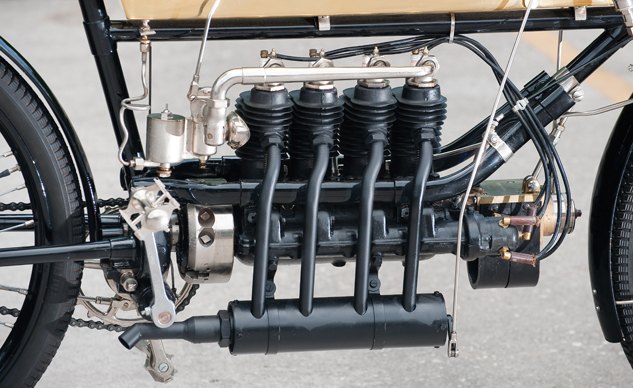
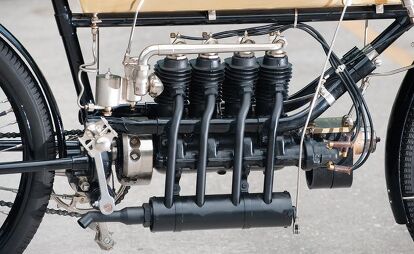



















































































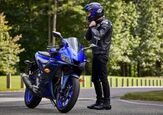
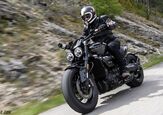
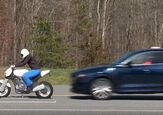
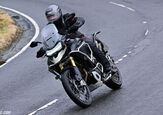
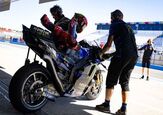

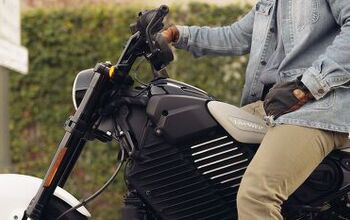
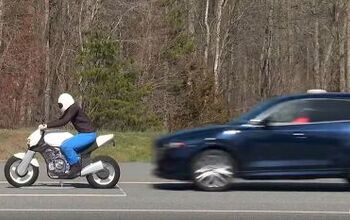
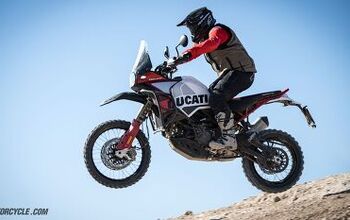
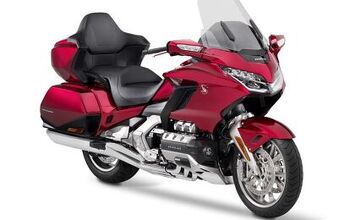
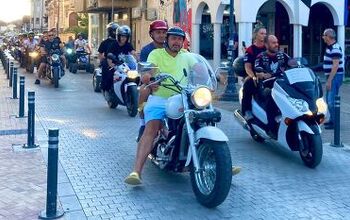

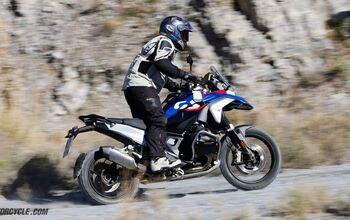

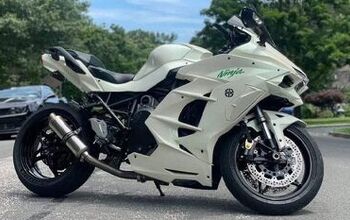
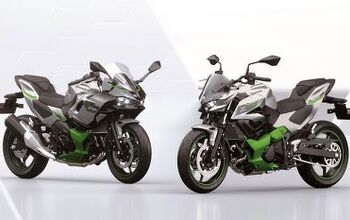
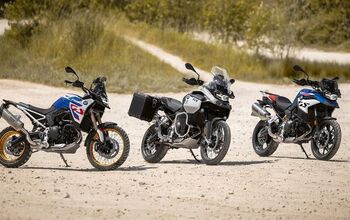
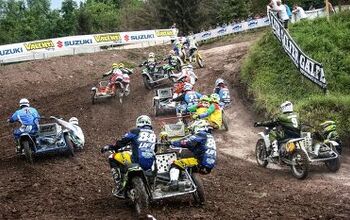

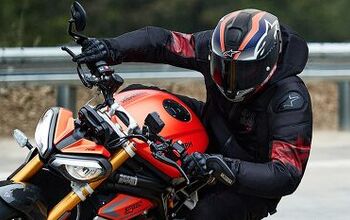
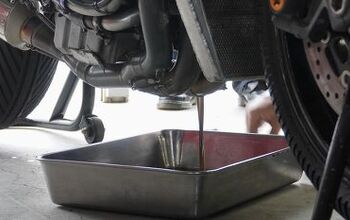
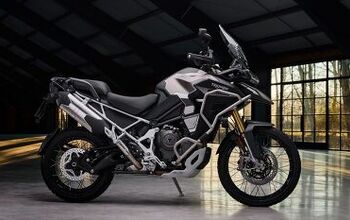

Comments
Join the conversation
The motorbikes of the teens and 20's are such beautiful works of art.
Nicely done. Reminds me of going to
Doc Patt's and seeing his collection of fourteen antique four
cylinders he called his Four Cylinder Row that included fours from
Ariel, Matchless, and Zundapp, as well as the aforementioned Nimbus.
Before his death, Doc Patt was the foremost authority on Ace
motorcycles being the first Ace restorer to show his bikes at AMCA
events (where they were greeted with disdain because they were
the XP-3 and XP-4 factory hillclimb/sidecar and solo racers that had
no standard to which they could be judged - Doc remedied that by
building a stock Ace and taking honors with it). The XP-4, that
contained the "swiss-cheese engine" was the one ridden by
Red Wolverton in 1923 on Philadelphia's Roosevelt Boulevard (a
"modern" concrete multi-lane highway described as "rough
wavy pavement" in the article). Red set a new world record of
129 mph shattering the old record by more than 10 mph. Ace
immediately advertised this achievement and posted a $10,000 bond
challenging any competitor to beat it - they never had to pay. What
you can't see from the photos is that Doc discovered, after talking
to Red, was that the hillclimb/sidecar, solo, and stock bikes all had
different tank widths. Leave it to Doc to figure this out and in the
days before the internet, locate NOS handlebar control parts in
Czechoslovakia for his stock Ace restoration. He was one of a kind - RIP Doc.
You can read a condensed version of my 1998 Doc Patt interview on my Tumblr page.